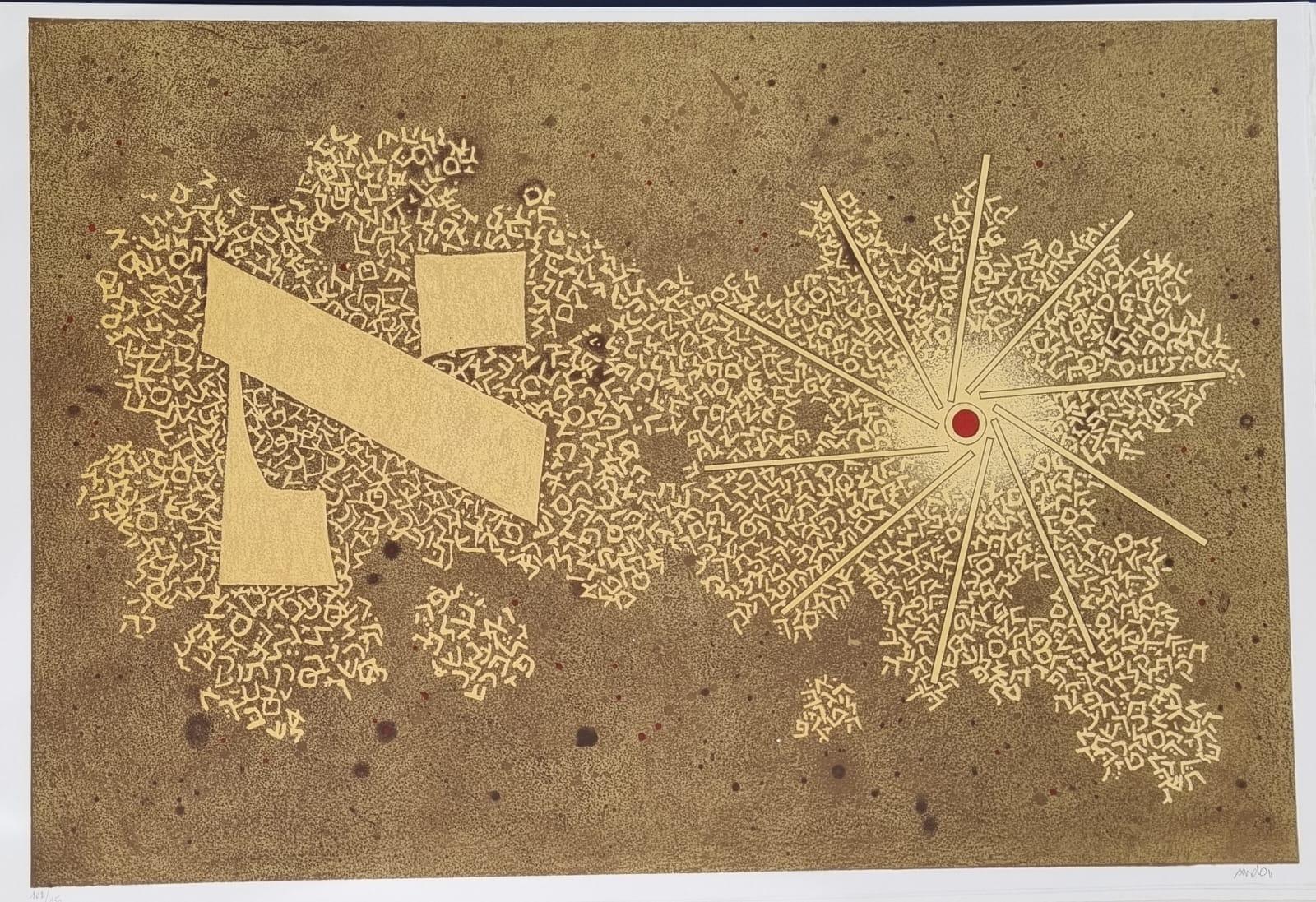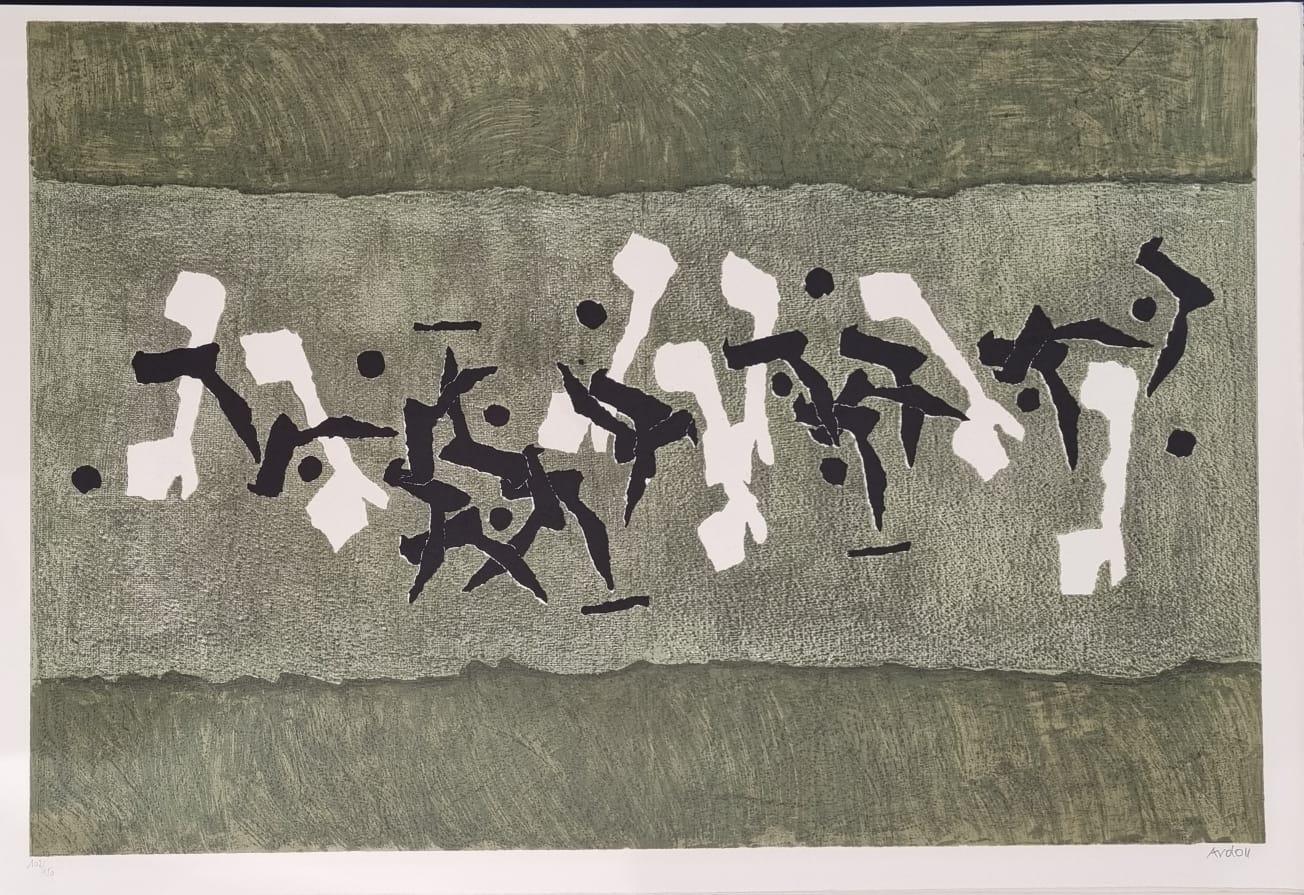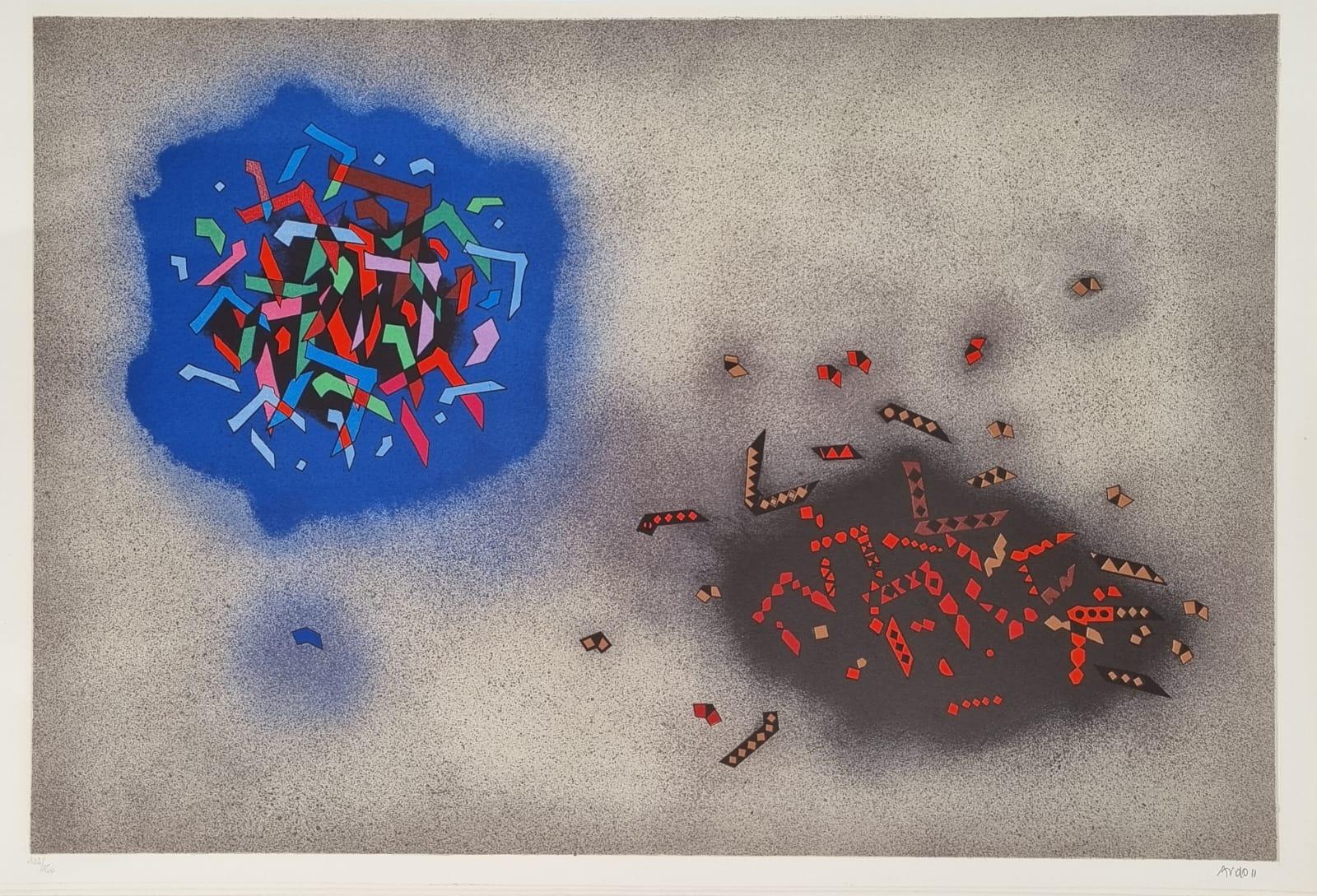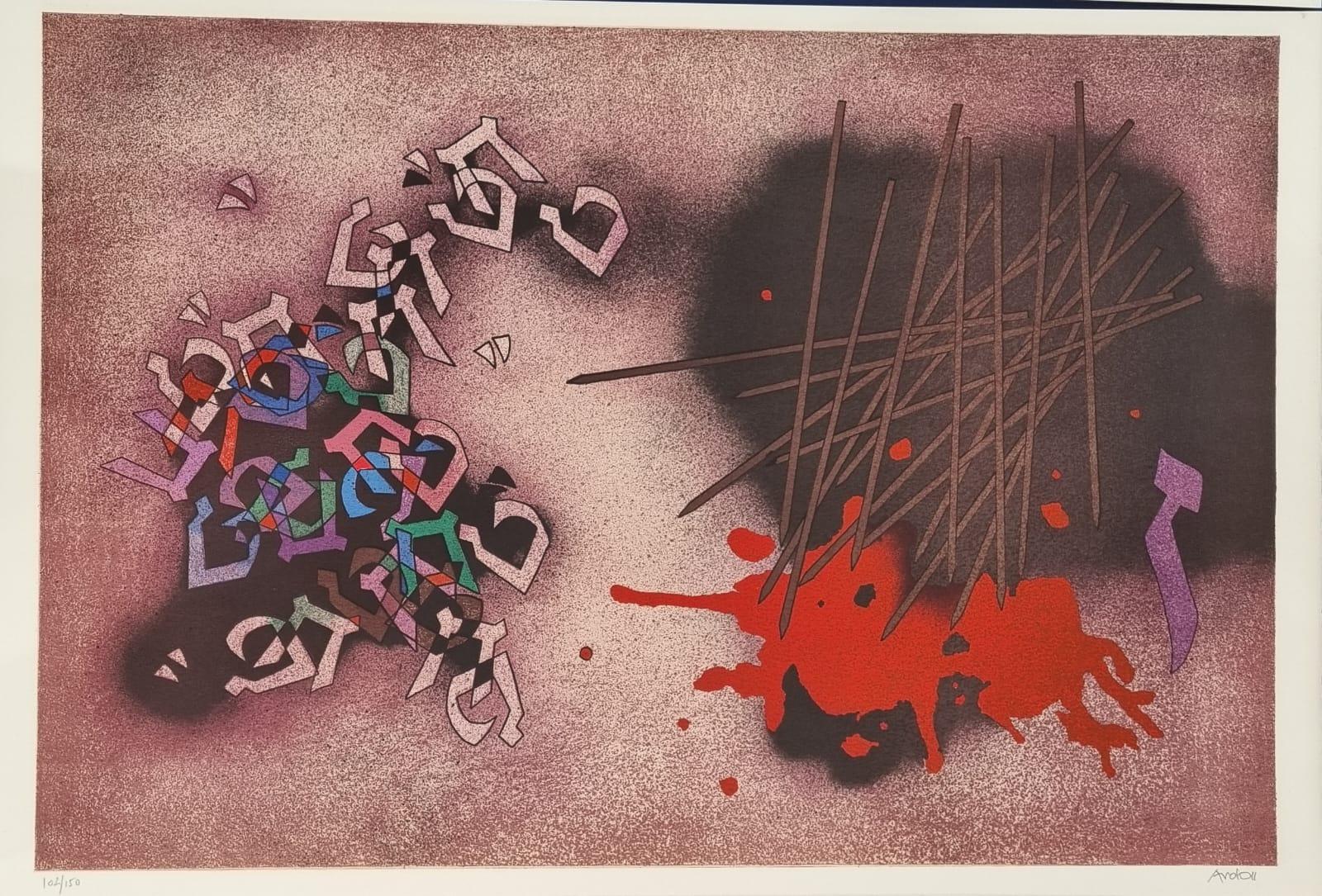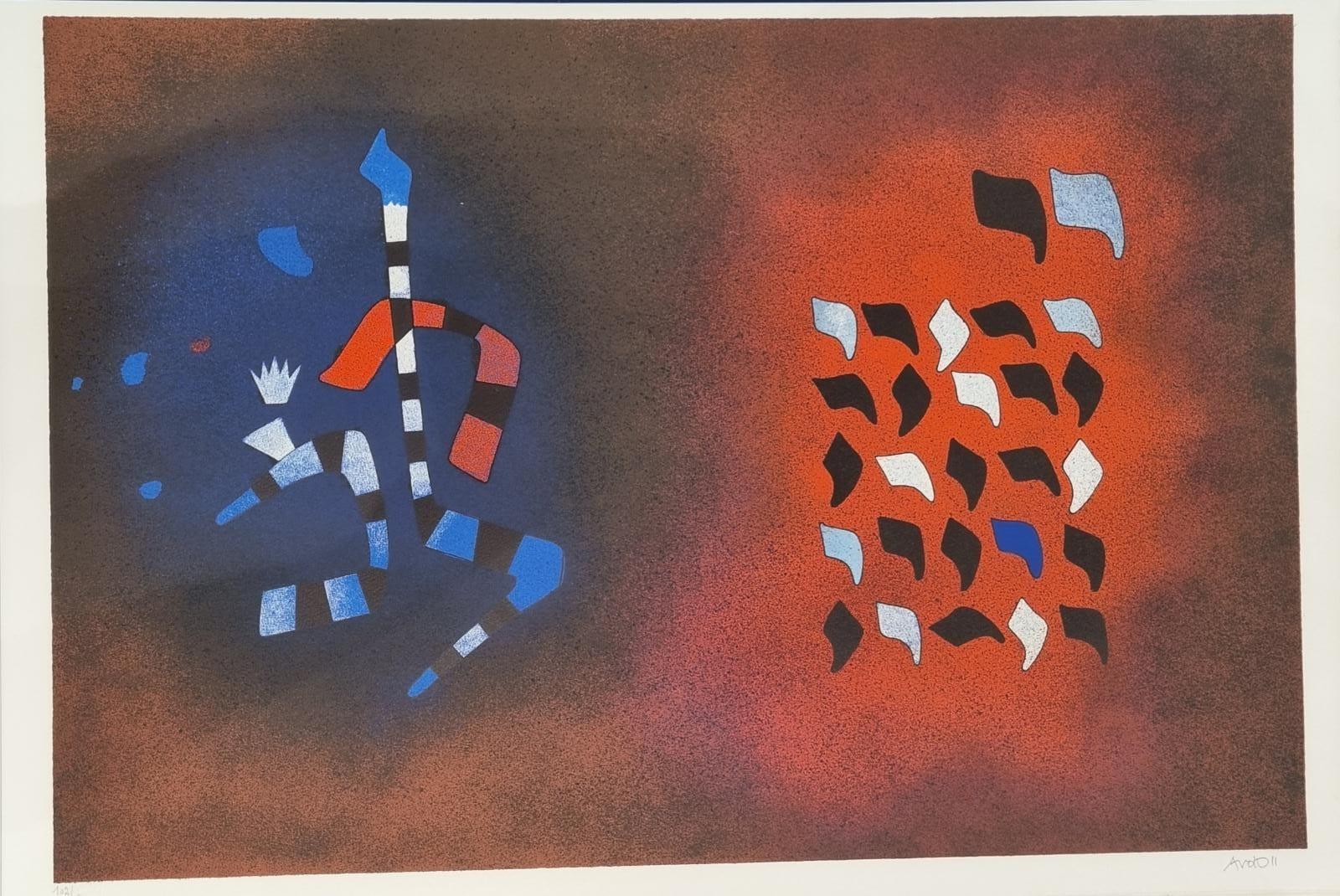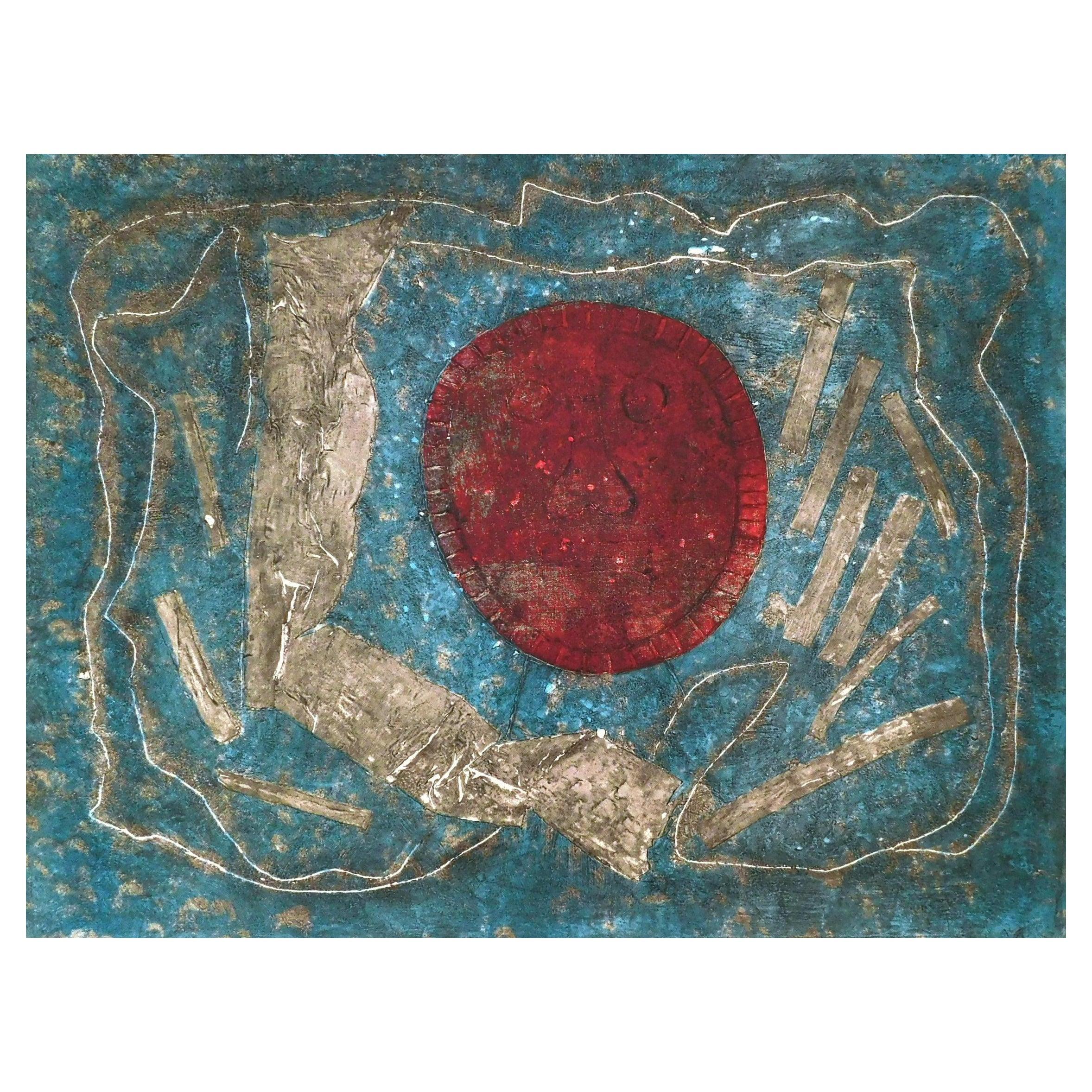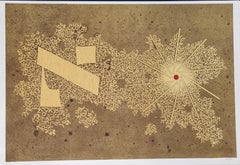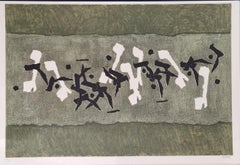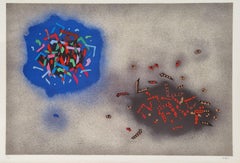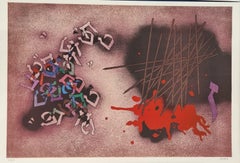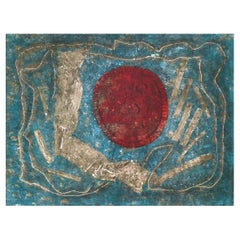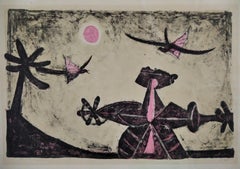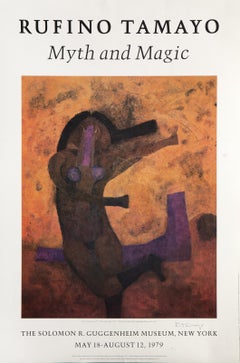Items Similar to The Creation - Bet
Want more images or videos?
Request additional images or videos from the seller
1 of 5
Mordecai ArdonThe Creation - Bet1970's
1970's
$500
£373.48
€432.99
CA$694.24
A$778.15
CHF 405.16
MX$9,501.56
NOK 5,144.06
SEK 4,876.11
DKK 3,230.54
Shipping
Retrieving quote...The 1stDibs Promise:
Authenticity Guarantee,
Money-Back Guarantee,
24-Hour Cancellation
About the Item
Ten original lithographs, printed by Mourlot Paris in the 1970's. Issued 150 copies numbered and signed.
102/150.
Creation was inspired by the Kabalistic conception of the Hebrew Alphabet.
Each work depicts a different letter ib the Alphabet.
Ardon's rich and imaginary world is demonstrated by abstract images and vibrant colors.
- Creator:Mordecai Ardon (1896 - 1992, Israeli)
- Creation Year:1970's
- Dimensions:Height: 23.63 in (60 cm)Width: 35.44 in (90 cm)
- More Editions & Sizes:part of a serie of 150 lithographs. 102/150Price: $500
- Medium:
- Movement & Style:
- Period:
- Condition:Great kept condition.
- Gallery Location:Jerusalem, IL
- Reference Number:1stDibs: LU1809212526072
About the Seller
No Reviews Yet
Vetted Professional Seller
Every seller passes strict standards for authenticity and reliability
Established in 1995
1stDibs seller since 2022
12 sales on 1stDibs
Typical response time: 10 hours
- ShippingRetrieving quote...Shipping from: Jerusalem, Israel
- Return Policy
Authenticity Guarantee
In the unlikely event there’s an issue with an item’s authenticity, contact us within 1 year for a full refund. DetailsMoney-Back Guarantee
If your item is not as described, is damaged in transit, or does not arrive, contact us within 7 days for a full refund. Details24-Hour Cancellation
You have a 24-hour grace period in which to reconsider your purchase, with no questions asked.Vetted Professional Sellers
Our world-class sellers must adhere to strict standards for service and quality, maintaining the integrity of our listings.Price-Match Guarantee
If you find that a seller listed the same item for a lower price elsewhere, we’ll match it.Trusted Global Delivery
Our best-in-class carrier network provides specialized shipping options worldwide, including custom delivery.More From This Seller
View AllThe Creation - Alef
Located in Jerusalem, IL
Ten original lithographs, printed by Mourlot Paris in the 1970's. Issued 150 copies numbered and signed.
102/150.
Creation was inspired by the Kabalistic conception of the Hebrew Al...
Category
1970s Symbolist More Prints
Materials
Lithograph
The Creation - Gimel Dalet
Located in Jerusalem, IL
Ten original lithographs, printed by Mourlot Paris in the 1970's. Issued 150 copies numbered and signed.
102/150.
Creation was inspired by the Kabalistic conception of the Hebrew Al...
Category
1970s Symbolist More Prints
Materials
Lithograph
The Creation - He Vav
Located in Jerusalem, IL
Ten original lithographs, printed by Mourlot Paris in the 1970's. Issued 150 copies numbered and signed.
102/150.
Creation was inspired by the Kabalistic conception of the Hebrew Al...
Category
1970s Symbolist More Prints
Materials
Lithograph
The Creation - Zayin Het Tet
Located in Jerusalem, IL
Ten original lithographs, printed by Mourlot Paris in the 1970's. Issued 150 copies numbered and signed.
102/150.
Creation was inspired by the Kabalistic conception of the Hebrew Al...
Category
1970s Symbolist More Prints
Materials
Lithograph
The Creation - Yud Kaf Lamed Mem
Located in Jerusalem, IL
Ten original lithographs, printed by Mourlot Paris in the 1970's. Issued 150 copies numbered and signed.
102/150.
Creation was inspired by the Kabalistic conception of the Hebrew Al...
Category
1970s Symbolist More Prints
Materials
Lithograph
Sunken Caesarea
By Mordechai Ardon
Located in Jerusalem, IL
A one of a kind piece by world famous Israeli artist Mordechai Ardon.
It is a framed oil on canvas painting.
65X54 cm (25 5/8 x 21 ¼ in).
Signed and dated "Ardon 60" (upper right).
S...
Category
1960s Abstract Abstract Paintings
Materials
Canvas, Oil
You May Also Like
Rufino Tamayo Original Mixografica, 1976, Sol
By Rufino Tamayo
Located in Phoenix, AZ
Mixografia on Paper “Sol (The Sun)” by well-known Mexico artist Rufino Tamayo (1891-1991).
Signed “R. Tamayo” lower right. Numbered lower left 96/140. Created 1976.
In excellent cond...
Category
1970s More Prints
Materials
Paper
Untitled
By Rufino Tamayo
Located in Barcelona, BARCELONA
The painting is being offered with a work and authenticity certificate
Category
1990s Abstract Expressionist More Prints
Materials
Lithograph
Nino Con Pajaros (Variant)
By Rufino Tamayo
Located in San Francisco, CA
This artwork titled "Nino Con Pajaros" Variant, 1976, is a color etching on Guarro paper by renown Mexican artist Rufino Tamayo, 1899-1991. It is hand signed and numbered 40/75 in black crayon by the artist. Published by Ediciones Poligrafa, Barcelona, Spain. The artwork (sheet) size is 29.5 x 22 inches, framed size is 41.25 x 33.75 inches. Referenced and pictured in the artist's catalogue raisonne by Pereda, plate #199 page 169. Custom framed in a wooden black frame, with light beige fabric matting. It is in excellent condition.
About the artist:
A native of Oaxaca in Southern Mexico, Rufino Tamayo's father was a shoemaker, and his mother a seamstress. Some accounts state that he was descended from Zapotec Indians, but he was actually 'mestizo' - of mixed indigenous/European ancestry. (Santa Barbara Museum of Art). He began painting at age 11. Orphaned at the age of 12, Tamayo moved to Mexico City, where he was raised by his maternal aunt who owned a wholesale fruit business.
In 1917, he entered the San Carlos Academy of Fine Arts, but left soon after to pursue independent study. Four years later, Tamayo was appointed the head designer of the department of ethnographic drawings at the National Museum of Archaeology in Mexico City. There he was surrounded by pre-Colombian objects, an aesthetic inspiration that would play a pivotal role in his life. In his own work, Tamayo integrated the forms and tones of pre-Columbian ceramics...
Category
Mid-20th Century Modern Figurative Prints
Materials
Etching
Price Upon Request
Myth and Magic Exhibition Poster, Modern Lithograph by Rufino Tamayo
By Rufino Tamayo
Located in Long Island City, NY
Rufino Tamayo, Mexican (1899 - 1991) - Myth and Magic Exhibition Poster, Year: 1979, Medium: Poster, signed in pen, Size: 33 x 22 in. (83.82 x 55.88 cm), Printer: Guggenheim Foundati...
Category
1970s Modern Prints and Multiples
Materials
Lithograph
Figura en Verde
By Rufino Tamayo
Located in New York, NY
Color Mixografía. One of 10 numbered artist's proofs, aside from the edition of 100. Signed, inscribed "P. de A." and numbered X/X in white pencil, lower margin. Printed and publish...
Category
1970s Modern More Prints
Materials
Lithograph, Color
Observador de Pajaros
By Rufino Tamayo
Located in Missouri, MO
"Observador de Pajaros" 1950
By. Rufino Tamayo (Mexican, 1899-1991)
Edition 83/200 Lower Right
Signed Lower Left
Unframed: 15.5" x 22.5"
Framed: 21.75" x 28.25"
Rufino Tamayo (August 26, 1899- June 24, 1991)
A native of Oaxaca in Southern Mexico, Rufino Tamayo's father was a shoemaker, and his mother a seamstress. Some accounts state that he was descended from Zapotec Indians, but he was actually 'mestizo' - of mixed indigenous/European ancestry. (Santa Barbara Museum of Art). He began painting at age 11. Orphaned at the age of 12, Tamayo moved to Mexico City, where he was raised by his maternal aunt who owned a wholesale fruit business.
In 1917, he entered the San Carlos Academy of Fine Arts, but left soon after to pursue independent study. Four years later, Tamayo was appointed the head designer of the department of ethnographic drawings at the National Museum of Archaeology in Mexico City. There he was surrounded by pre-Colombian objects, an aesthetic inspiration that would play a pivotal role in his life. In his own work, Tamayo integrated the forms and tones of pre-Columbian ceramics into his early still lives and portraits of Mexican men and women.
In the early 1920s he also taught art classes in Mexico City's public schools. Despite his involvement in Mexican history, he did not subscribe to the idea of art as nationalistic propaganda. Modern Mexican art at that time was dominated by 'The Three Great Ones' : Diego Rivera, Jose Clemente Orozco, and David Alfaro Siqueros, but Tamayo began to be noted as someone 'new' and different' for his blending of the aesthetics of post Revolutionary Mexico with the vanguard artists of Europe and the United States.
After the Mexican Revolution, he focused on creating his own identity in his work, expressing what he thought was the traditional Mexico, and refusing to follow the political trends of his contemporary artists. This caused some to see him as a 'traitor' to the political cause, and he felt it difficult to freely express himself in his art. As a result, he decided to leave Mexico in 1926 and move to New York, along with his friend, the composer Carlos Chavez. The first exhibition of Tamayo's work in the United States was held at the Weyhe Gallery, New York, in that same year. The show was successful, and Tamayo was praised for his 'authentic' status as a Mexican of 'indigenous heritage', and for his internationally appealing Modernist aesthetic. (Santa Barbara Museum of Art).
Throughout the late thirties and early forties New York's Valentine Gallery gave him shows. For nine years, beginning in 1938, he taught at the Dalton School in New York.
In 1929, some health problems led him to return to Mexico for treatment. While there he took a series of teaching jobs. During this period he became romantically involved with the artist Maria...
Category
20th Century Abstract Abstract Prints
Materials
Lithograph
Price Upon Request
More Ways To Browse
Vintage F1 Poster Art Posters
Vintage Railway Carriages
Banksy Skateboard
Charles Heaney
Skate Decks Keith Haring
Vintage Fox Hunt Print
Thai Retro Poster
L Art De L Egypte Antique
Lucio Amelio
Pasta Print
Ricard Poster
Tim Engelland
Vintage Posters Palm Trees
Antique Church Organ
Antique Church Organs
Dali Cheval
Dig For Victory Poster
Felix Gonzalez Torres
